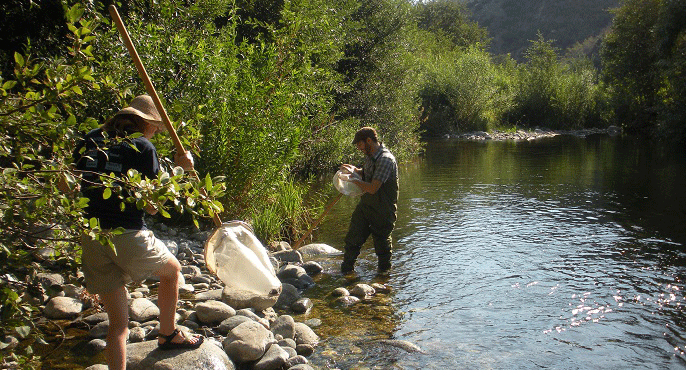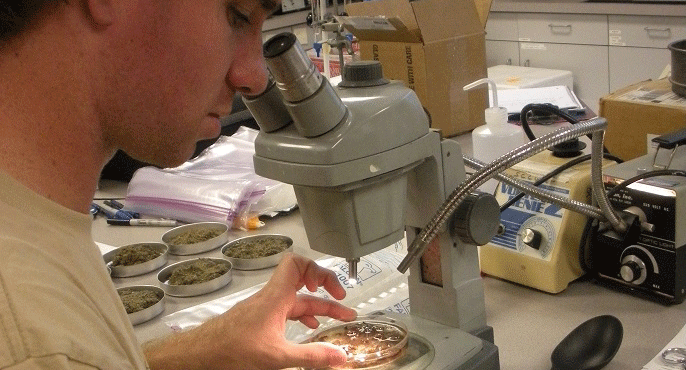One of SCCWRP’s top six accomplishments of its first 50 years
SCCWRP has harnessed the power of biology-based monitoring methods to gain unprecedented, quantitative insights into water body condition.
SCCWRP’s top six accomplishments
The six most important, managerially relevant accomplishments of SCCWRP’s first 50 years, as identified by those who’ve helped make SCCWRP the organization it is today
Technical accomplishments
Organizational accomplishments
Biological communities living in aquatic environments offer some of the most revealing, relevant insights about a water body’s overall health, making biological assessments – or bioassessment – foundational to effective management of aquatic ecosystems. SCCWRP has a long history of developing managerially relevant biological assessment tools, from its foundational fish histology work to more recent efforts to assess the biological effects of ocean acidification.
Where SCCWRP has been most effective, however, has been developing bioassessment tools that quantify the health of biological communities – instead of merely assessing the health of individual organisms. SCCWRP is an international leader in developing approaches to extract more meaningful insights from biological community composition data. Since the 1970s, SCCWRP has been building tools known as indices of biotic integrity that simplify bioassessment data collected from a site into a single numerical condition score. Perhaps SCCWRP’s most enduring success story in this regard is the development of the Benthic Response Index (BRI) in the mid-1990s. Still widely used by Southern California managers today, the BRI quantifies how coastal marine communities are being impacted by chemical contamination in seafloor sediment.

More recently, SCCWRP has developed a pair of stream condition assessment indices so powerful and widely applicable that they’ve already been incorporated into wadeable stream monitoring programs across California. Known as the California Stream Condition Index and the Algal Stream Condition Index, respectively, these freshwater indices are being used as a foundation for developing State and regional policies intended to extend greater protections to California’s rivers, creeks, and other streams.
Meanwhile, as rapid advances in molecular technologies transform the field of bioassessment, SCCWRP is growing and evolving its research programs in lockstep. Recognizing that DNA-based technologies have the potential to lower costs, improve speed and boost resolving power, SCCWRP has conducted foundational work to test, validate and standardize these technologies for bioassessment applications, including pilot testing with the end-user water-quality management community. SCCWRP also is laying the scientific groundwork to build bioassessment indices calibrated for molecular data.
